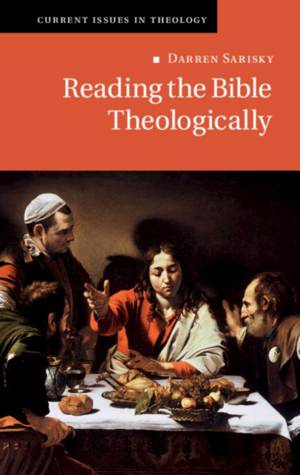
- Afhalen na 1 uur in een winkel met voorraad
- Gratis thuislevering in België vanaf € 30
- Ruim aanbod met 7 miljoen producten
- Afhalen na 1 uur in een winkel met voorraad
- Gratis thuislevering in België vanaf € 30
- Ruim aanbod met 7 miljoen producten
Zoeken
Omschrijving
Theological interpretation of the Bible is one of the most significant debates within theology today. Yet what exactly is theological reading? Darren Sarisky proposes that it requires identification of the reader via a theological anthropology; an understanding of the text as a collection of signs; and reading the text with a view toward engaging with what it says of transcendence. Accounts of theological reading do not often give explicit focus to the place of the reader, but this work seeks to redress this neglect. Sarisky examines Augustine's approach to the Bible and how his theological insights into the reader and the text generate an aim for interpretation, which is fulfilled by fitting reading strategies. He also engages with Spinoza, showing that theological exegesis contrasts not with approaches that take history seriously, but with naturalistic approaches to reading.
Specificaties
Betrokkenen
- Auteur(s):
- Uitgeverij:
Inhoud
- Aantal bladzijden:
- 424
- Taal:
- Engels
- Reeks:
- Reeksnummer:
- nr. 13
Eigenschappen
- Productcode (EAN):
- 9781108497480
- Verschijningsdatum:
- 28/02/2019
- Uitvoering:
- Hardcover
- Formaat:
- Genaaid
- Afmetingen:
- 150 mm x 222 mm
- Gewicht:
- 635 g

Alleen bij Standaard Boekhandel
+ 435 punten op je klantenkaart van Standaard Boekhandel
Beoordelingen
We publiceren alleen reviews die voldoen aan de voorwaarden voor reviews. Bekijk onze voorwaarden voor reviews.












